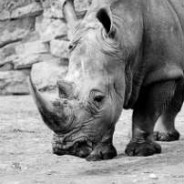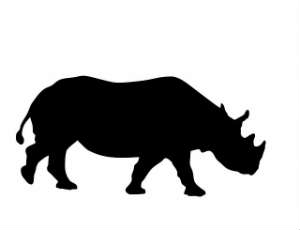How Much Do You Know About The White Rhino?

How Much Do You Know About The White Rhino?
Mar 26
When Sudan, the last male northern white rhino, died on March 19, 2018, people around the world mourned his death, while scientists and researchers were left wondering, “what now?”
Will the northern white rhino become extinct now that Sudan has died? Why is conservation of this species so important? Why were there so few northern white rhinos left in the world?
Discover with Ira Riklis the answers to these questions and learn other details, including some information about Sudan, the last known male northern white rhino.
Some Facts About The Northern White Rhino
The northern white rhinoceros is a sub-species mainly concentrated in South Africa, Namibia, Kenya, and Zimbabwe.
Northern white rhinos once roamed across the southern part of Chad, northwestern Uganda, the northern section of the Democratic Republic of Congo, the Central African Republic and southwest area of Sudan.
They quickly died, including the ones in zoos and conservation sites, leaving only three northern white rhinos known to exist. Two were females and one male, named “Sudan.”
What Made Sudan So Beloved?
Sudan was captured in the wild in 1975 and moved to the Ol Pejeta Conservancy in Kenya. As the northern white rhino numbers began quickly diminishing, officials made concentrated efforts to produce natural offspring. That did not happen, however, and after Suni, the second-to-last male northern white rhino died in 2014, Sudan became the only known male northern white rhino in the world.
Advancing age kept him from fathering any offspring, as did multiple health issues. Sudan recently received 24 hour armed guard protection within the conservancy. Although officials made concentrated efforts to treat Sudan, he became weaker from a leg infection. At the ripe old age of 45, he could no longer fight off chronic health issues. Authorities made the painstaking decision to put Sudan down.
Prior to his death, worldwide efforts to save him catapulted Sudan into the media limelight. People raised money for his care, and hopefully conservation of the northern white rhino species itself. National Geographic reported that conservationists even created a Tinder profile for Sudan.
There are now only two females known to exist, Sudan’s daughter Najin and granddaughter, Fatu.
Why Numbers Have Dwindled
One of the reasons that the northern white rhinos\ population dwindled is because of poachers. Poachers often kill northern white rhinos, as well as other species and subspecies of rhinos.
The reasons are that the skin and the horns garner a hefty price on the black market.
The WWF explains that “Uncontrolled hunting” was a major factor in the decline of the species. The site briefly provides details about the fact that the rhino horn is a major reason for poaching.
Why Do People Want Rhino Horns?
The demand for northern white rhino skin and horns became more prevalent in recent years, a major contributing factor in their decline and near extinction. While there are some facts about the value of the horns, much of the alleged benefit of the northern white rhino horn is pure speculation and myth.
PBS indicates that Muslim men in Yemen use rhino horns as a handle for their carved daggers, the “jambiya.”
The use of rhino horns dates to ancient Chinese medicine and is still considered a valuable cure in Traditional Chinese Medicine circles today. Crushing the horns, grinding them into a powder and mixing with boiling water supposedly cures illnesses such as fever and gout.
The most pervasive use of white rhino horns comes from a report by The Atlantic, indicating that the Vietnamese believe it is a cure for cancer, while the Vietnamese elite considers rhino horns a sign of wealth and stature.
What Now?
CNN reveals that researchers harvested some of Sudan’s genetic material. The hope is that artificial insemination of one of the females will produce an offspring and keep the northern white rhino from extinction. They also plan to harvest eggs from the two females and eggs from southern white rhinos currently in European zoos.
At this point, conservation of this subspecies is a tense wait-and-see project.






